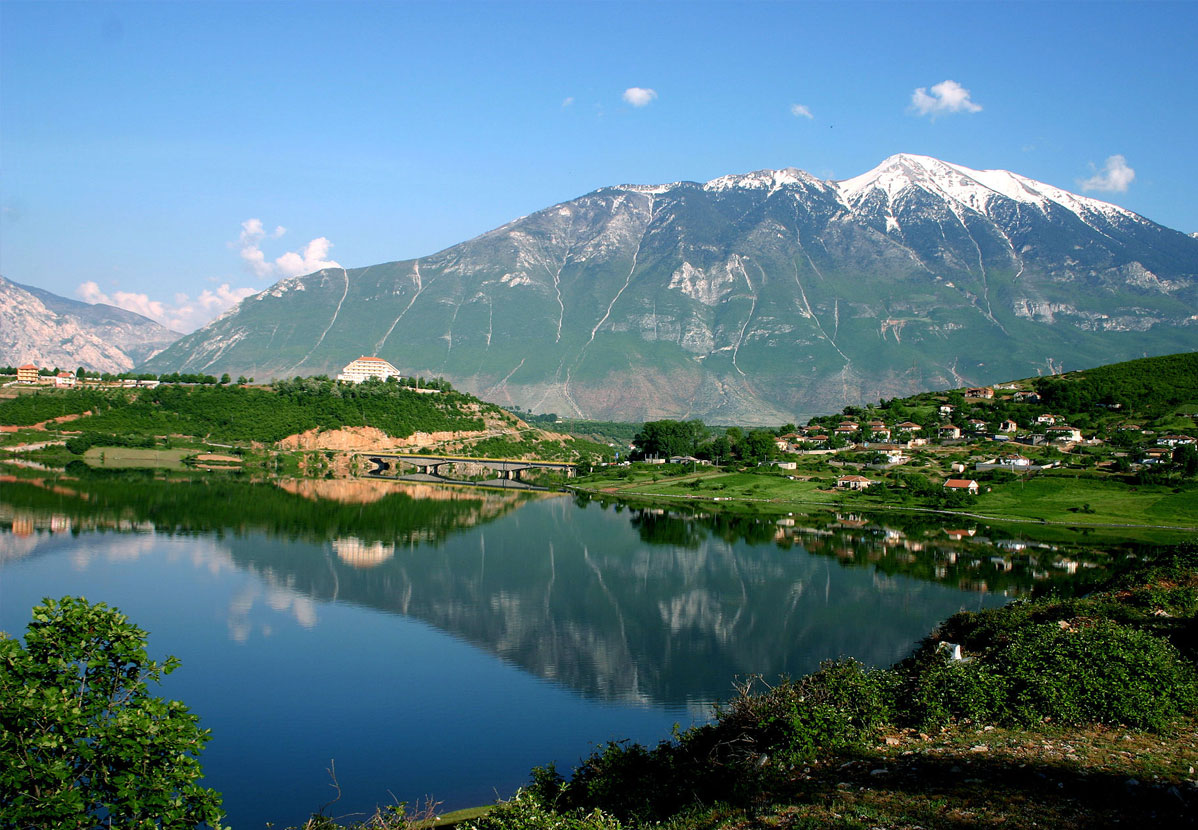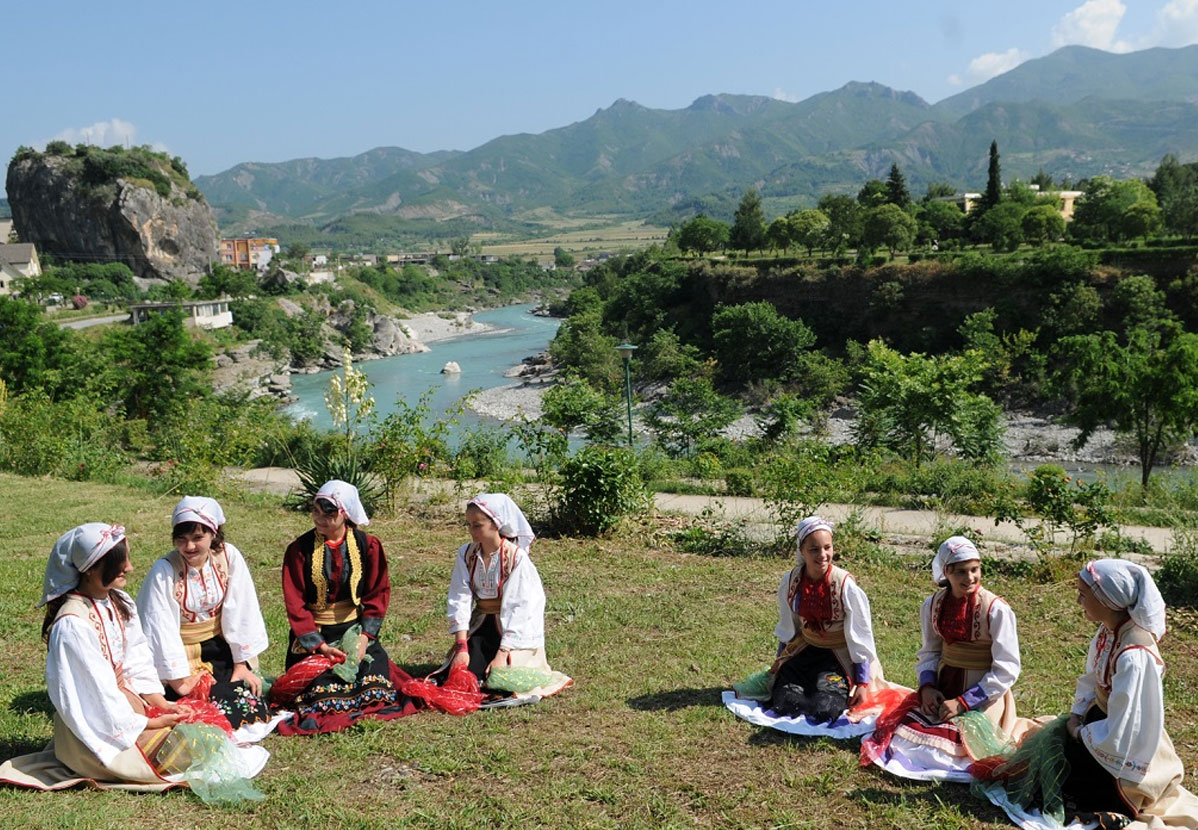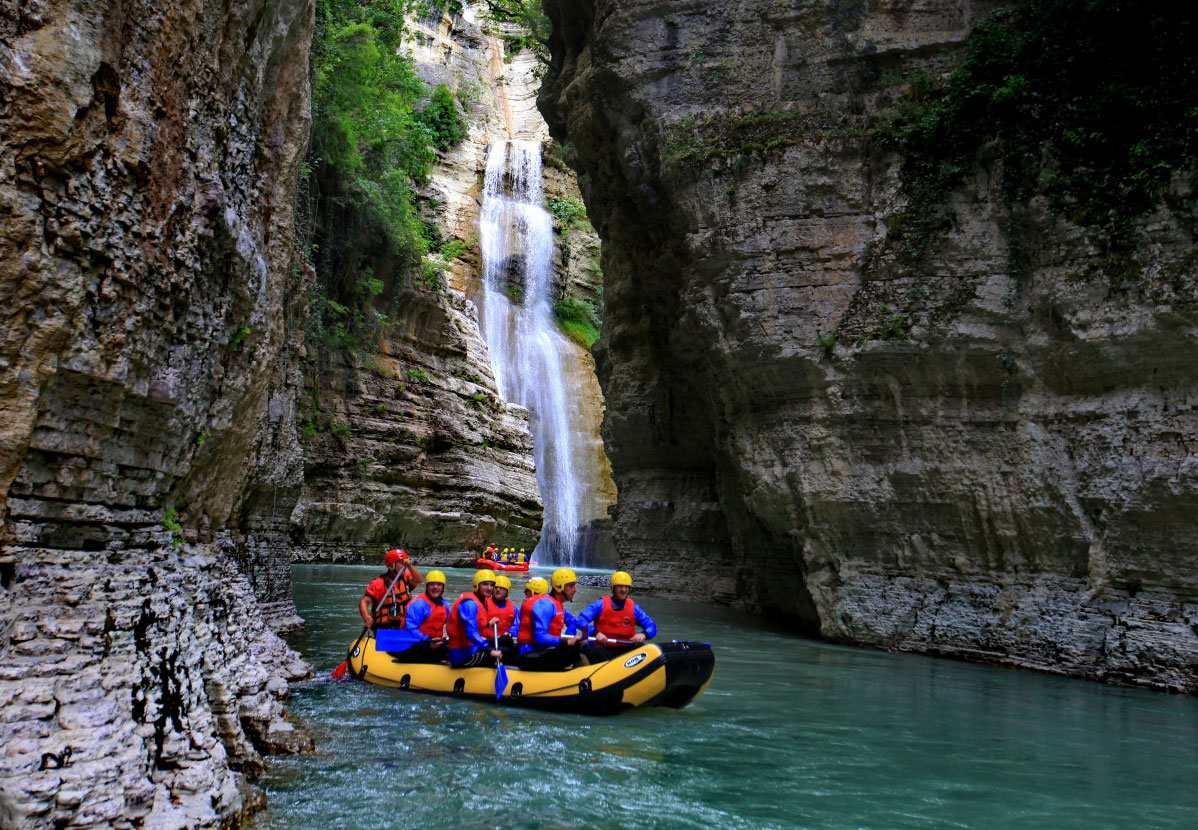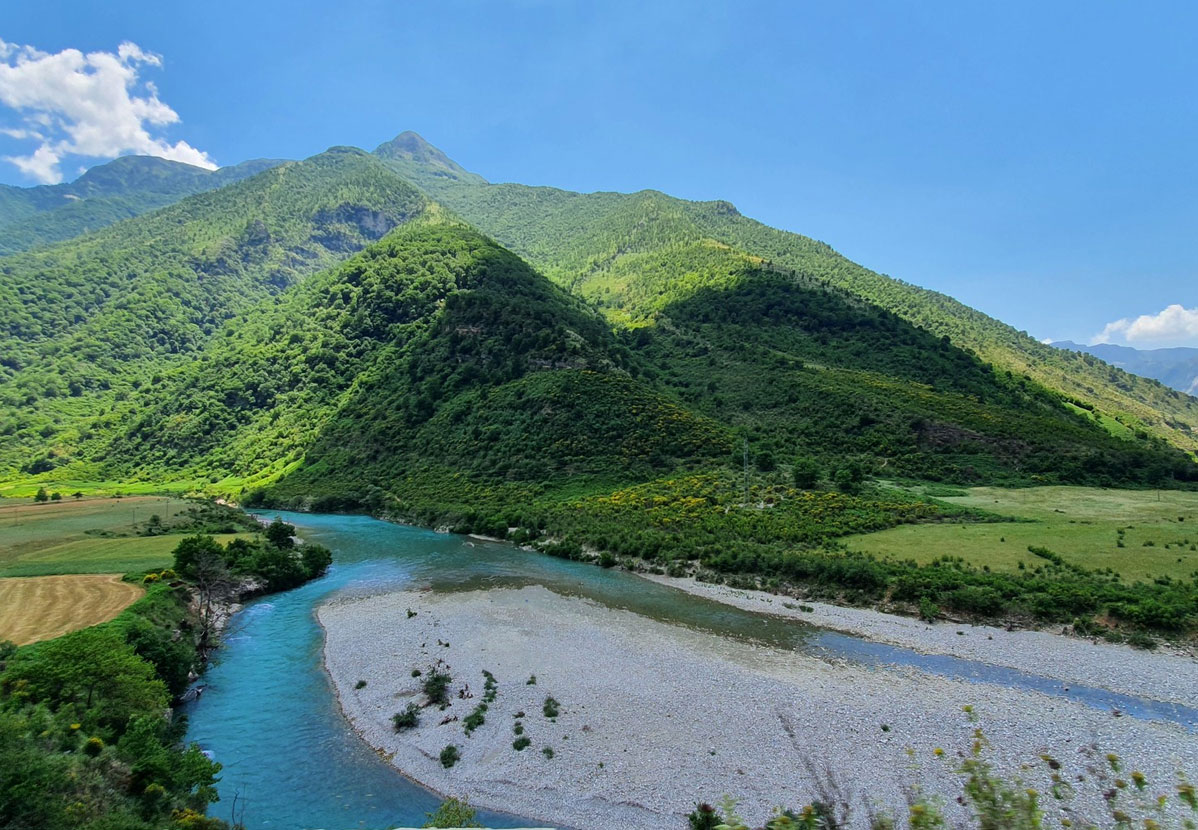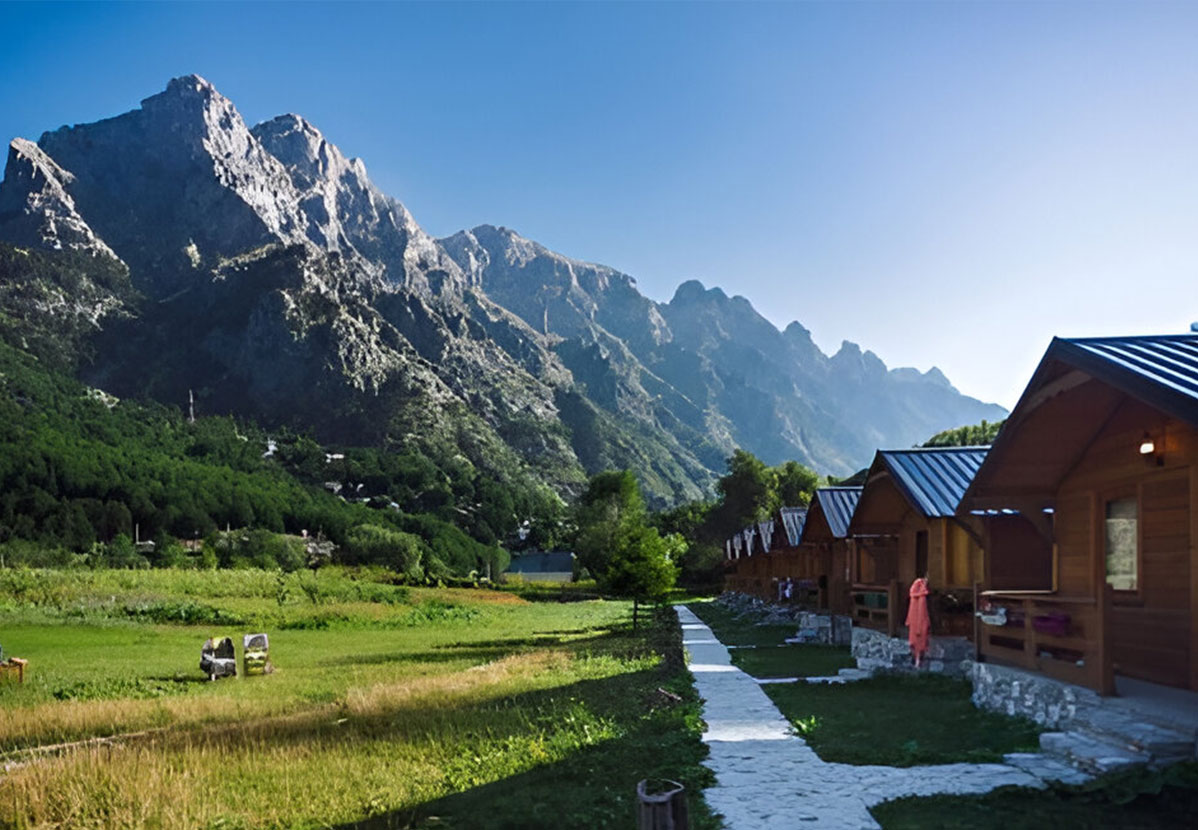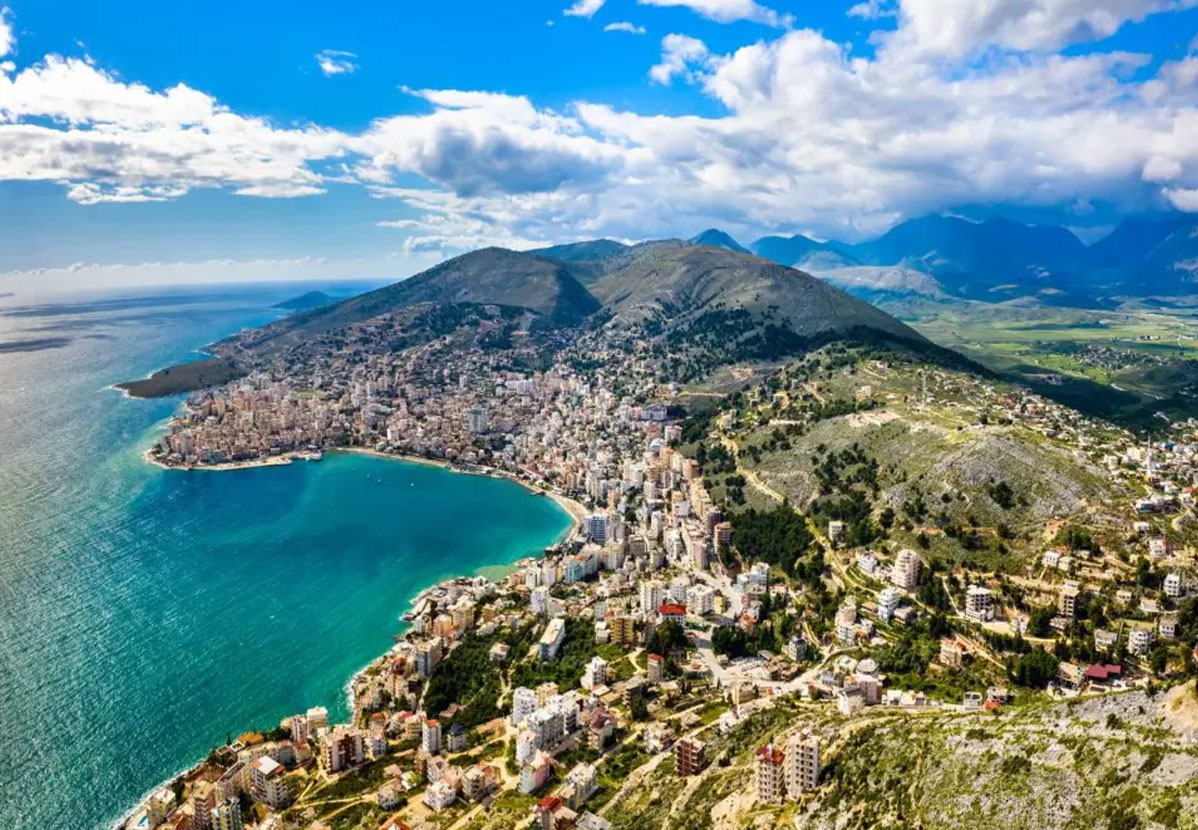Kukësi, city of the Color Trail at the foot of the Mountain of Gjallica
Located at the 2487 m (2487 m) mountain in northeastern Albania and on the shore of Fierza Lake, the city of Kukes is one of the newest cities in Albania.
It is part of the mountainous province of Luma. The city is built on an early historical settlement, which is evidenced by Illyrian tombs discovered in the village of Kënetë.
The city of Kukës borders the northeast and east with the town of Prizren in Kosovo through the border point of Morina, and with Has in the north, Puka in the west and Peshkopi in the south.
Due to its location, where the two Rivers of White and Black Drini join, Kukes offers an extremely picturesque mountain landscape, which resembles a peninsula in its form.
For years, Kukës has become an attractive mountain destination visited by many foreign and local tourists, passionate about nature, mountain trails, valleys, forests, springs, meadows, and mountains.
The Color Trail is one of the most beautiful attractions of the city of Kukës, which offers a variety Çaja to the Korab Valley, near the border, connecting Albania with North Macedonia and Kosovo.
During the discovery of this scenic trail, which can be traversed for several hours on foot you will be able to see the natural monuments ” Gryka e Vanave” between Mount Koritnik and Mount Gjallica; Bella’s Waterfall as well as Kallabaku Lake.
Also, while traveling by car in Kukës you should not miss the “Shkallë e Keqe” Canyon, the natural monument located near the village of Bicaj in Kukës; the magical panorama that gives the Gjallica mountain about 2,489 meters high where you can view the entire city of Kukës, where groups of professional climbers organize mountain climbing and mountaineering; The village of Shishtavec, 33 km southeast of the city of Kukes.
Shishtavec, as a natural monument, offers several tourist attractions, such as the Shishtavec mountains and the Morning Stone, a massive rock and sandstone, part of the natural monuments of Albania.
The artificial Lake of Fierza, created on the bed of the Drin River, is another fascinating attraction of Kukes, which also serves as a linking node between residents living in the mountainous provinces of Kukës, Tropojë, Hasi and Pukë.
